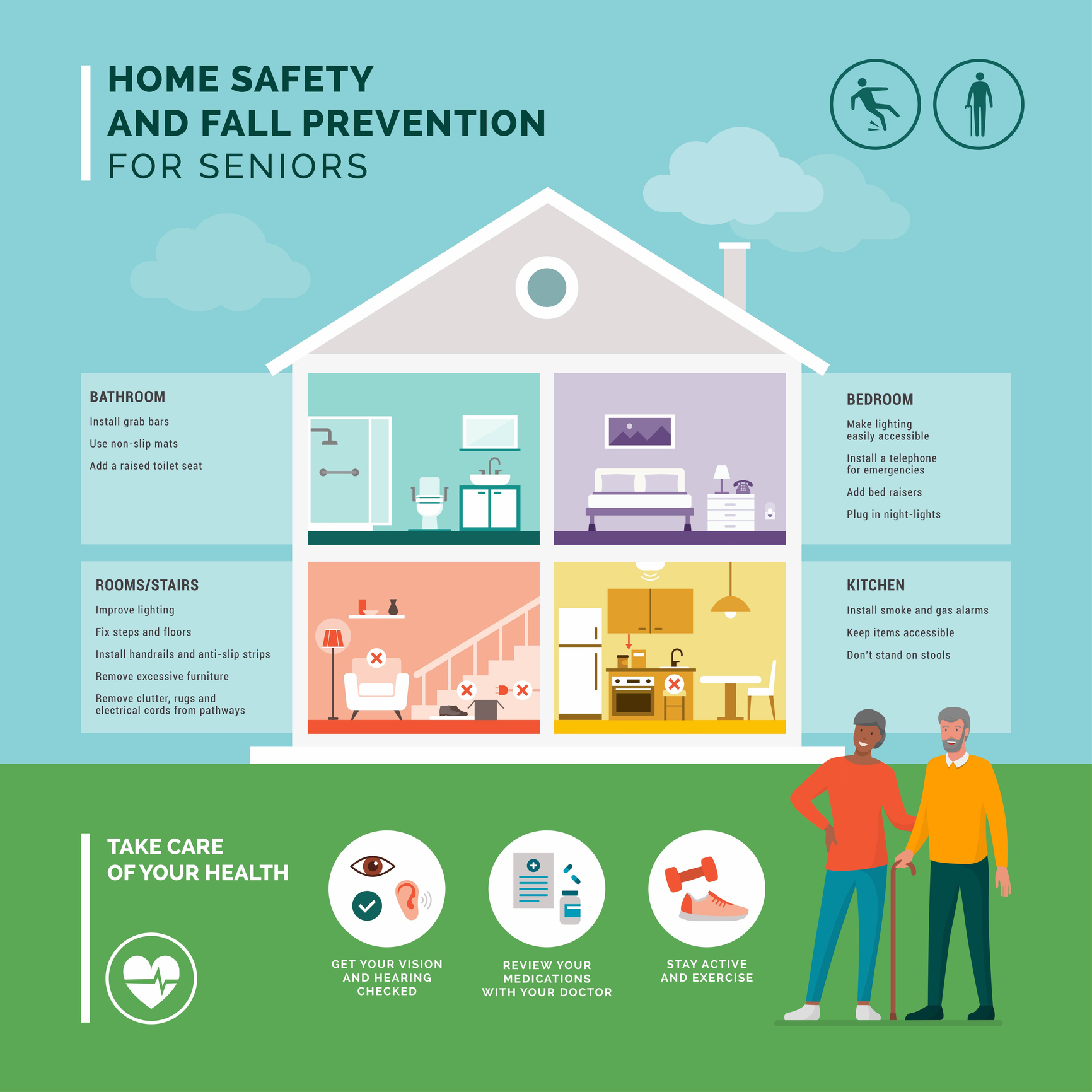Across many regions winter has arrived in all its glory. For seniors, the risk of having a fall that leads to injury is greater with factors like snow and ice. Daily activities such as a walk to the mailbox become hazardous in such conditions. With some simple safety measures and exercises to improve balance and build strength, older adults can more confidently navigate inside and outside their home this season.
The Centers for Disease Control and Prevention estimates that about a quarter of all adults over the age of 65 have a fall each year. Three million seniors are treated in emergency rooms for fall injuries. Experiencing a fall-related injury often leads to a loss of mobility and independence among older adults and declining quality of life.
Indoor modifications
By addressing fall risks such as vision problems, poor lighting, household trip hazards, health problems, footwear issues, and medication management, older adults can stay safer at home. Make sure seniors are safe at home with well-lit, clear paths and hallways. Check the safety of stairs and railings as well.
Exercises to stay fall-free
Exercises designed to reduce the risk of falls can help older adults feel more steady and less fearful of falling and remain fall-free. This time of year, we tend to spend a great deal of time in the kitchen. The kitchen counter provides perfect support to practice balance exercises while washing dishes, cooking, or waiting for the oven timer. Once steady on two feet, together and apart, try balancing on one foot for 10 seconds without holding onto the counter. Then switch feet. Increase time on each foot without support to 30 seconds with eyes open and as balance improves, with eyes closed. Repeat each balancing stance five times, twice a day.
Rising from sitting to standing can pose a problem for some older adults. Practicing the sit-to-stand motion in a sturdy chair that won’t slide or roll can help strengthen muscles and prevent falls. With supportive, grippy shoes on, practice scooting forward in the chair and shifting weight forward. Using the gluteal and core muscles, slowly rise to a standing position. A sturdy countertop positioned in front of the chair can offer support if needed. The arms or seat of the chair can be used to help push up to a standing position and back down to seated. The goal is to be able to sit and stand slowly without the use of hands at all. Repeat this exercise 10 times, twice a day, and add hand weights as strength improves.
Hip Protectors to Prevent Fall Injuries
Wearing hip protectors is a proven intervention that can save wearers from injuries related to falls. Hip protectors allow the wearer to feel confident both inside and outside. Despite the common misconception that they are like hockey pants, there are styles of hip protectors on the market that are discreet. Often prescribed following a fall, it’s best to be proactive and protect yourself because while the objective is to remain fall-free, falls can happen.
Medications
As always, talk with your doctor before starting any new exercise program, and don’t push to the point of pain. Never start or stop any prescription medication without a doctor’s supervision. Be sure to review medications frequently, especially if taking five or more medications which can increase the risk for falls. For more tips on how to stay fall free this winter, follow this link to the Centre for Hip Health and Mobility.







Add Your Voice
0 Comments
Join the Discussion